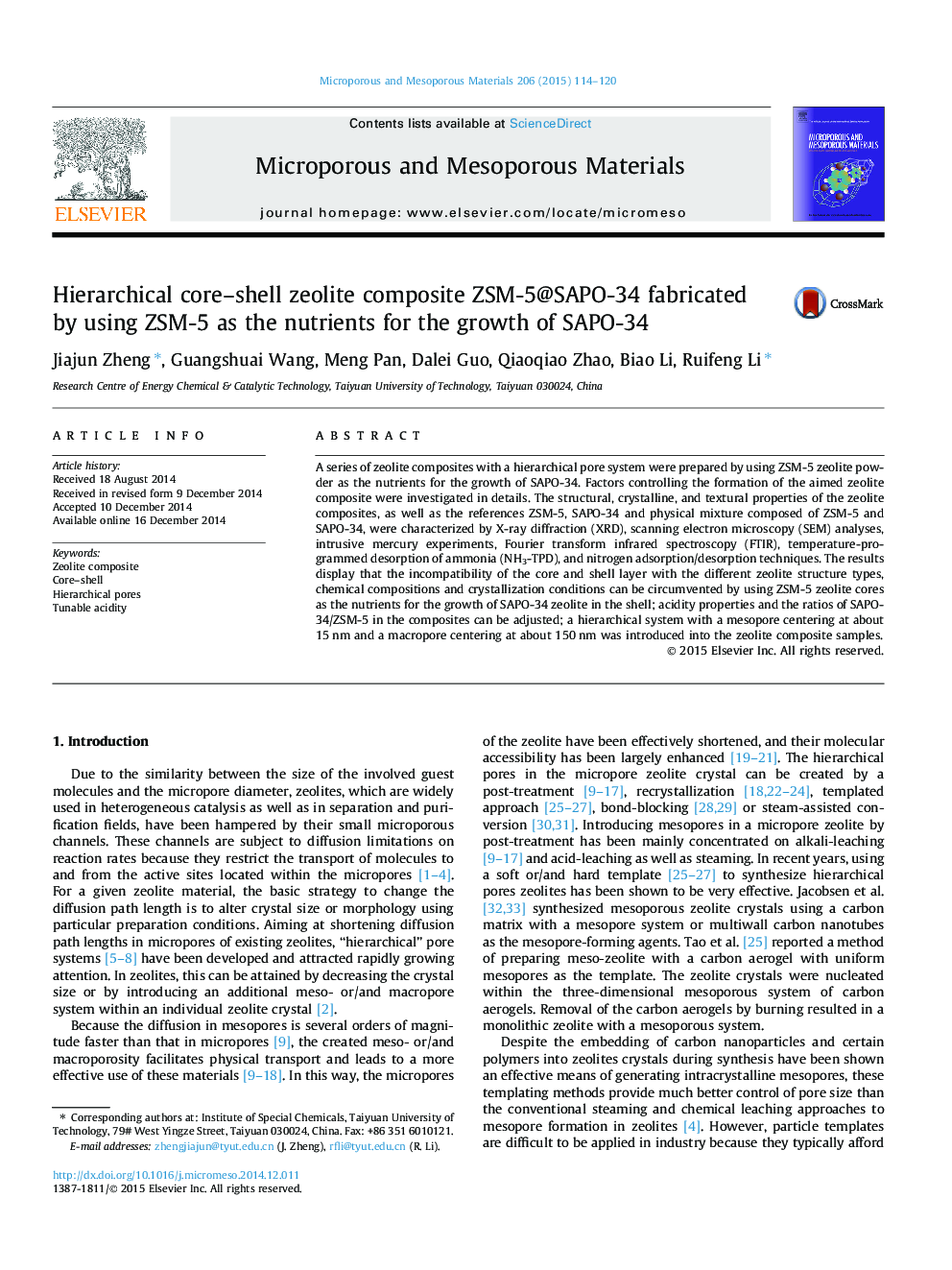| Article ID | Journal | Published Year | Pages | File Type |
|---|---|---|---|---|
| 72834 | Microporous and Mesoporous Materials | 2015 | 7 Pages |
•Hierarchical zeolite composite fabricated by using ZSM-5 as nutrients for the growth of SAPO-34.•Incompatibility of core and shell was circumvented by using core as nutrients for the growth of shell.•Depolymerization of core contributes to the transmission of Si-species from cores to shell layers.•The tunable ZSM-5/SAPO-34 ratios offered the zeolite composite the adjustable acidity properties.•Large mesopore volumes and mesopore areas were obtained with slightly sacrificed microporosity.
A series of zeolite composites with a hierarchical pore system were prepared by using ZSM-5 zeolite powder as the nutrients for the growth of SAPO-34. Factors controlling the formation of the aimed zeolite composite were investigated in details. The structural, crystalline, and textural properties of the zeolite composites, as well as the references ZSM-5, SAPO-34 and physical mixture composed of ZSM-5 and SAPO-34, were characterized by X-ray diffraction (XRD), scanning electron microscopy (SEM) analyses, intrusive mercury experiments, Fourier transform infrared spectroscopy (FTIR), temperature-programmed desorption of ammonia (NH3-TPD), and nitrogen adsorption/desorption techniques. The results display that the incompatibility of the core and shell layer with the different zeolite structure types, chemical compositions and crystallization conditions can be circumvented by using ZSM-5 zeolite cores as the nutrients for the growth of SAPO-34 zeolite in the shell; acidity properties and the ratios of SAPO-34/ZSM-5 in the composites can be adjusted; a hierarchical system with a mesopore centering at about 15 nm and a macropore centering at about 150 nm was introduced into the zeolite composite samples.
Graphical abstractFigure optionsDownload full-size imageDownload as PowerPoint slide
